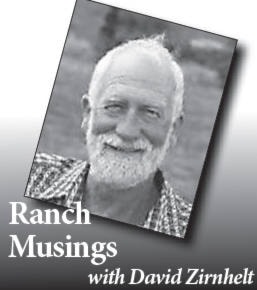David ZIRNHELT
Special to the Tribune
It has been said that water is the gift of life. No wonder that space scientists are looking for water on Mars and elsewhere in their quest for life supporting environments in space.
Personally I think that we should put a higher priority on finding ways to better steward this earth for a common good, here and now. Life in space for humans can wait.
Let us wisely use what we have been gifted from this changing nature — changing because of climate variations.
In our earthly farming pursuits we need to think about how we are going to thrive with less and maybe more water unevenly distributed during the growing season.
This morning I went to the recently developed website (bcagriculturewatercalculator.ca) looking for information about how much precipitation we need this year to get a reasonable hay crop.
With efficient irrigation, say a low pressure (drip and drizzle) pivot irrigation would need less than 12 inches of water applied over the land during the growing season (frost free) of 106 days.
Anybody can zero in on their piece of land and find out this information.
So then I looked at the accumulated depth of rain in my rain gauge. It reads one and one third inch of rain so far this spring and summer. Now we are within one week of putting up our first crop of hay.
The point here is that the normal growing season for hay is almost over. A second crop for haying or grazing may be possible if we get the first crop off the field and we have irrigation, or the rain gods bless us with enough rain.
If you are a commercial producer of livestock or produce, you might just want to put a finer point on your management of available water.
Starting with what your crop needs is one thing, but delivering the crop needs is quite a technical challenge.
To meet this challenge you will need to know your soil type(s) and its water holding capacity. Soils vary in their ability to hold moisture (as opposed to it drying up quickly).
Then as to applying water, various types of irrigation equipment are possible for the situation. Most people don’t realize that the big sprinklers putting out large volumes of water lose a lot to evaporation whereas the gentle dripping kind of nozzles lose much less.
My advice is to consult with irrigation engineers who work for the local companies.
If you have an Environmental Farm plan you may qualify to have an assessment of your situation and a design prepared for you at very little cost, possibly with some government subsidy.
You can overwater and that is counterproductive and wasteful.
Now this one and a third inch of rain we have had in the eastern Cariboo where I live, will produce a crop of hay. But what kind of a crop we are not sure.
It is looking fair to good. Hay shortages are expensive for ranchers because to buy the hay you have failed to grow can be financially prohibitive if there is a general shortage in the larger area.
The quality of your soil fertility and health and your management of the crop ( has it been renovated?) is another factor besides the rainfall.
The bottom line: water is the gift of life for us and our crops.
David Zirnhelt is a rancher and member of the Cariboo Cattlemen’s Association. He is also chair of the Advisory Committee for the Applied Sustainable Ranching Program at TRU.
